Retiring in Palm Springs: 10 Must-Know Factors Before You Pack Your Bags
Palm Springs isn’t just a playground for Hollywood celebs escaping L.A. paparazzi, or Coachella crowds seeking the ultimate music-festival selfie spot. For retirees, it’s a desert oasis with a dash of quirk, a slice of serenity, and a whole lot of sunshine (like, really a lot). But let’s cut through the glossy travel-mag spiel and talk about the nitty-gritty of actually living—day in, day out—in a place where temperatures can melt flip-flops, golf carts outnumber sedans, and cacti are practically part of the furniture.
2If you’re considering making Palm Springs your “forever home” in retirement, there are some big-picture (and little-picture) factors you need to wrap your head around. This isn’t your typical Google bullet list; we’re going deep into the real stuff retirees encounter, from the spike in your A/C bill to the truth about local healthcare options to that oh-so-crucial social scene. So grab your wide-brimmed hat and SPF 50—here are the 10 must-know factors that’ll shape your desert retirement life in Palm Springs.
The Weather: Unrelenting Sun & Those Elusive “Cool” Months
If you’ve only visited Palm Springs in early spring or late fall, you might have been seduced by the clear blue skies and breezy 80-degree afternoons. But let’s be real: summers here can be absolutely scorching. We’re talking 100+ degree highs for days—sometimes weeks—on end. You might think, “I love the heat!” but there’s a big difference between a weekend of poolside margaritas and living through the thick of July when the asphalt starts to feel like a waffle iron.
The Perks of Desert Sunshine
Great for joint pain: If you’ve got creaky knees or arthritis, the dry desert air can work small wonders. A lot of retirees swear by it—less humidity means fewer aches and pains (though your mileage may vary).
Outdoor living: For many months of the year (especially October through April), the weather is near perfect. You can hike, golf, lounge, or do just about anything outdoors without freezing or melting.
Fewer rainy-day blues: Palm Springs sees an average of around 300 days of sunshine annually, which can boost your mood and keep you feeling energized—just remember to hydrate like crazy.
The Drawbacks
Utility bills: Cranking up the A/C in the summer is not optional unless you enjoy risking heatstroke in your living room. Prepare for higher electricity costs, especially if you love a cool indoor environment.
Adjusting your schedule: Many locals plan shopping, errands, and social outings early in the morning or after sundown during the hottest months. Daytime might be strictly for siestas and Netflix.
Possible isolation in high summer: Seasonal “snowbirds” (part-time residents) split for cooler climates, and many year-round folks go into a bit of hibernation mode. This can lead to a quieter social scene if you’re craving constant company in July or August.
Reality Check
If you’ve never lived in triple-digit heat for weeks at a time, it’s worth renting in Palm Springs for a summer season before you buy. Test your threshold. It’s a lot different than just reading about it—some folks end up feeling like they’re stuck in a slow-roasting oven by August.
The Social Scene: A Mix of Easygoing & Extravagant
Yes, Palm Springs can feel like a retiree’s playground—golf courses, country clubs, early bird specials. But it’s also the desert darling for trendy millennials, LGBTQ+ communities, weekend partiers, and mid-century architecture aficionados. The population skews older, sure, but there’s a surprising amount of cultural diversity and nightlife if you know where to look.
Clubs, Groups & Hobbies
Active Retirement Clubs: From art classes to book clubs to coffee meetups, there’s no shortage of ways to fill your social calendar. Local community centers and libraries often post monthly event calendars—like painting workshops or group outings to the Palm Springs Aerial Tramway.
Golf & Tennis Culture: If you like whacking small balls around pristine lawns (under a blazing sun), you’ve found your mecca. Palm Springs is famous for golf courses that cater to every skill level—though membership fees can range from budget-friendly to “holy cow, that’s my entire pension.”
Volunteer Opportunities: Many retirees find meaningful ways to volunteer. Whether it’s working at The Living Desert Zoo, the local historical society, or assisting during major cultural events, there’s a way to plug in beyond the golf course if you want it.
Nightlife & Festivals
Downtown Scene: Palm Canyon Drive has a rotation of bars, restaurants, and live music venues. It’s no L.A., but you can find a lively craft cocktail crowd and a thriving LGBTQ+ bar scene, especially on Arenas Road.
VillageFest: Every Thursday night, Palm Springs turns its main drag into a street fair full of local artisans, performers, and food. It’s touristy, sure—but also a staple for locals who want to people-watch and maybe snag a funnel cake.
Music & Arts Festivals: Coachella and Stagecoach may be in Indio, but they bleed into the broader area, bringing seasonal excitement (and traffic). If you dig music festivals, it’s a bonus. If you can’t stand the crowds, brace yourself for those spring weekends when every road is jam-packed.
Reality Check
Some retirees love the vibe: it’s a weird, wonderful mix of “slower pace meets never-ending party.” Others find it disorienting—especially if you’re looking for a quiet retirement free from loud music and late-night bar crawls downtown. Palm Springs is contradictory like that. One day you’re sipping coffee at 7 a.m. with fellow retirees; the next day, your neighbor’s Airbnb guests are blasting EDM until 2 a.m.
Cost of Living: Sunshine Tax or Worth the Price?
Palm Springs isn’t exactly cheap. Sure, it’s more affordable than, say, Beverly Hills or Malibu. But for a smaller desert city, you might raise an eyebrow at the housing costs, property taxes, and day-to-day expenses.
Housing Market Snapshot
Median Home Prices: As of mid-2020s data, the median price for single-family homes floats in the $600,000 to $700,000 range, often climbing higher for those iconic mid-century modern properties. Condo living can be cheaper, but monthly HOA fees may be a shock.
Property Taxes: California property taxes aren’t the highest in the nation, but they’re not trivial. If you bought your home decades ago in another city, prepare for a potential sticker jolt.
Renting vs. Buying: Some retirees opt to rent initially, especially if they’re testing the waters or want a “lock-and-leave” lifestyle for traveling. But the monthly rent can be substantial, too—especially in desirable neighborhoods or gated communities.
Everyday Expenses
Utilities: Electricity bills can spike with all-day A/C usage. Water costs are also on the rise as the region grapples with drought concerns.
Groceries & Dining: Because Palm Springs is a tourist hotspot, restaurants can be pricier. Grocery costs run a bit above the national average, especially for specialty items (and hey, you might develop a taste for fancy date shakes, because this is date country).
Entertainment & Recreation: If you’re playing golf at premium clubs or hitting the spa scene regularly, budget accordingly. But there are also free or low-cost activities like hiking, visiting galleries, or attending local farmers’ markets.
Reality Check
This is not your typical “cheap retirement” destination. Factor in your monthly bills, possible HOA fees, and that occasional high-end dinner in a retro-chic diner on Palm Canyon Drive. If your finances aren’t in order, the desert can drain your wallet faster than you can say “swamp cooler.” On the upside, if you come from a high-cost metro (L.A. or San Francisco), you might find Palm Springs a relative bargain—just watch out for that “sunshine tax.”
Amenities: Not Just Golf (But Definitely Golf)
Palm Springs draws the resort crowd, which means a surprising array of amenities for a city its size. Think high-end spas, tennis courts, boutique stores, and more golf courses than you could possibly play in a year. But beyond the obvious luxuries, what does day-to-day life offer?
Shopping & Dining
Grocery Options: Big chains (like Ralphs, Vons, and Trader Joe’s) are plentiful. For more gourmet choices, you’ll find higher-end grocery stores with organic produce and artisanal cheeses that might blow your mind (and your budget).
Boutiques & Malls: Downtown Palm Springs has art galleries, vintage furniture stores, and local clothing boutiques. For more standard retail therapy, there’s the nearby Desert Hills Premium Outlets in Cabazon—an epicenter for brand-name deals.
Restaurants: Yes, there’s a big “retro diner” culture. But you’ll also find top-notch sushi, Mexican, farm-to-table bistros, and classic steakhouses. Seasonal visitors often drive the buzz—meaning you’ll find a new hot spot every few months.
Recreation & Fitness
Golf: Clearly the headliner. If you want to tee off on a Monday morning, there’s always a course ready. Just keep in mind that green fees vary wildly.
Hiking & Outdoors: The surrounding mountains are a haven for nature lovers. The trails at Indian Canyons or the Joshua Tree National Park (about an hour away) offer scenic escapes from the city bustle.
Community Centers & Clubs: Look for senior centers that host yoga, water aerobics, or group fitness classes specifically designed for retirees. This can help maintain your health and widen your social circle in one fell swoop.
Reality Check
Palm Springs is a desert resort town, so the amenities can feel tourist-centric. That means you get luxurious spas and golf clubs—but you might not get the same level of everyday convenience as you would in a bigger city. Some people love that “getaway” ambiance; others crave more practical big-city amenities (think: comprehensive public transit, endless restaurant variety, major sporting events). Decide which side of the fence you’re on.
Healthcare & Access: Don’t Skip This One
When you’re retired, healthcare isn’t just an afterthought. It’s often one of the driving factors behind where you settle. Palm Springs offers a solid selection of medical facilities, but it’s not a sprawling metro area with dozens of hospital systems.
Local Hospitals & Clinics
Desert Regional Medical Center: One of the primary hospitals in the Coachella Valley, located in Palm Springs itself. It has a good reputation for emergency care and a range of specialties.
Eisenhower Medical Center: Located in Rancho Mirage (just a short drive from Palm Springs), this hospital is well-regarded for cardiac care and other specialties. Many retirees gravitate to areas closer to Eisenhower for peace of mind.
Specialized Care: Given the area’s significant retiree population, local doctors often specialize in geriatrics, cardiology, and orthopedics. You’ll find plenty of physical therapy clinics, too—helpful if you’ve got golf-related aches and pains.
Prescription & Routine Care
Pharmacies: Common chain pharmacies (CVS, Walgreens) are around, but check if your insurance plan is widely accepted.
Medicare & Supplemental Plans: Make sure your plan has decent coverage in this region. Sometimes, smaller cities don’t have as many in-network specialists.
Travel for Advanced Care: If you require highly specialized procedures or cutting-edge treatments not offered locally, you may need to commute to bigger health centers in L.A. or San Diego, both roughly two hours away. That’s an important consideration for chronic conditions.
Reality Check
A lot of retirees pick Palm Springs for the “feel-good” dryness and the assumption that major medical facilities are close by. While healthcare is decent and focused on senior care, it’s not an urban megalopolis with every specialist under the sun. If your health needs are complex, you might find yourself on the I-10 heading west more often than you’d like.
Lifestyle: Laid-Back or Frenzied Fun?
When you say “retirement in Palm Springs,” some people picture sipping cocktails by the pool, playing golf three times a week, and enjoying quiet strolls through art galleries. Others think of noisy pool parties, endless house guests (because everyone wants to visit), and a constant swirl of festivals.
Slow Pace vs. Party Scene
Quiet Residential Neighborhoods: Many parts sof Palm Springs (especially away from the downtown strip) are quite serene. Gated communities with well-manicured lawns, tranquil cul-de-sacs, and friendly neighbors walking their dogs at dawn.
Tourist Hubs: Closer to downtown or near popular resorts, it can feel busier, especially during peak season (January to April) and festival season (April to May). Expect more traffic and the occasional late-night commotion.
You’re Not Just Another Resort Guest
Weekend Warriors: Many folks from L.A. come in for the weekend to party, which can be a double-edged sword: local businesses thrive, but it can feel like living in a vacation hotspot 24/7.
Building a Routine: If you need a set schedule (gym, grocery store, coffee break with friends), you can absolutely build that here. But be ready for seasonal flux. Snowbirds might vanish by May, leaving you wondering where your bridge partners went.
Reality Check
Palm Springs is a chameleon. It can be your peaceful desert retreat or your glitzy weekend carnival. The real question is: which version do you want to live with, and can you adapt when the energy shifts between off-season calm and in-season hubbub?
Top Retirement Communities: From Country Clubs to Cozy Condos
If you’re serious about retiring in Palm Springs, you’ve probably spotted ads for “active adult” communities where the grass is somehow always greener. But which ones actually deliver?
Sun City Palm Desert
Location: Technically in Palm Desert (about 14 miles from downtown Palm Springs), this Del Webb 55+ community is massive, with multiple golf courses and rec centers.
Why It’s Popular: Social clubs, onsite restaurants, and a guarded gate for extra security. Residents rave about the activities calendar—dance classes, painting workshops, and more.
Four Seasons at Palm Springs
Location: North Palm Springs, near the base of the San Jacinto Mountains.
Why It’s Popular: Another 55+ community offering single-family homes in a resort-like setting. The clubhouse includes a fitness center, pool, and tennis courts.
Vibe: Smaller than Sun City, so it can feel more tight-knit. You might actually know your neighbors here, as opposed to living in a sprawling “senior city.”
The Lakes Country Club
Location: Palm Desert (again, super close to Palm Springs proper).
Why It’s Popular: Gated community with a 27-hole championship golf course, tennis, pickleball, and an amazing clubhouse.
Vibe: Golf-centric luxury. Expect well-maintained grounds, a higher price point, and a crowd that loves the social club lifestyle.
The Lakes Country Club
Location: Palm Desert (again, super close to Palm Springs proper).
Why It’s Popular: Gated community with a 27-hole championship golf course, tennis, pickleball, and an amazing clubhouse.
Vibe: Golf-centric luxury. Expect well-maintained grounds, a higher price point, and a crowd that loves the social club lifestyle.
The Lakes Country Club
Location: Palm Desert (again, super close to Palm Springs proper).
Why It’s Popular: Gated community with a 27-hole championship golf course, tennis, pickleball, and an amazing clubhouse.
Vibe: Golf-centric luxury. Expect well-maintained grounds, a higher price point, and a crowd that loves the social club lifestyle.
Rancho Las Palmas Country Club
Location: Rancho Mirage, adjacent to Palm Desert.
Why It’s Popular: Quick access to shopping and dining on Highway 111, along with resort-level amenities.
Vibe: Upscale, close to prime dining, especially around The River at Rancho Mirage complex.
Seven Lakes Country Club
- Location: Palm Springs
- Why It’s Popular: Known for its mid-century modern vibes—designed in the 1960s. If architecture is your thing, you’ll drool over the clean lines and retro stylings.
- Vibe: Smaller, historically significant, and definitely more “Palm Springs iconic.”
Reality Check
Some communities have strict HOAs that can drive you nuts—think fines if you paint your front door the wrong shade of beige. Others are super chill. Always read the community’s covenants, conditions, and restrictions (CC&Rs). Talk to residents if possible. That glossy brochure might gloss over real issues like water rationing, recurring special assessments, or that neighbor who blasts Sinatra until midnight.
Real Estate Trends & Tips: Buy, Rent, or Wait?
Palm Springs real estate is famously cyclical. Seasonal demand, snowbird influx, and general California real estate mania all play a role in pricing.
Recent Trends
Price Appreciation: The region saw strong appreciation in the early 2020s, partly driven by remote workers escaping bigger cities. But some experts predict a leveling off—or at least slower growth—in the later 2020s as interest rates fluctuate and the job market evolves.
Mid-Century Modern Obsession: Authentic MCM homes or newly renovated properties in that style command a premium. If you’re a design buff, be prepared to open your checkbook wide or compromise on location.
Second Homes & Investment: Palm Springs is also popular for vacation rentals. Expect stiff competition if you’re shopping during peak season. Retirees wanting a quiet neighborhood might find themselves up against investors looking to cash in on short-term rentals.
Buying vs. Renting
Renting: Gives you flexibility, but the monthly cost can be high, especially for homes or condos in desirable areas. Also, shorter leases may come with “vacation rental” prices.
Buying: If you see yourself settling down long-term, buying may make financial sense—especially if you can handle the monthly carrying costs and property taxes.
Seasonal “Try-Out”: Some retirees do a 6-month rental to get a feel for the vibe. If you hate the summer heat, no harm done—you haven’t locked yourself into a mortgage.
Reality Check
You might read headlines proclaiming it’s a buyer’s market or a seller’s market. Truth is, Palm Springs is hyperlocal. A home near downtown with a pool can cost double what a similar-sized home would cost in a less trendy suburb. Partner with a local agent who actually knows the neighborhoods, or at least spend some serious time scoping out the area yourself before committing.
Seasonality & Tourism: Loving the Snowbirds or Dreading the Crowds?
Palm Springs famously transforms into a snowbird haven from January to April. During these months, the population swells with retirees from colder climates looking to soak up the sun. The result? Humming restaurants, bustling golf courses, and jammed streets around downtown.
Peak Season Positives
Buzzing Social Scene: More events, more energy, more new faces to meet. If you love being around people, this is prime time.
Economic Booster: More visitors mean local businesses thrive—restaurants, boutiques, art shows, etc.
Mild Weather: The desert is basically perfect in these months—sunny days without the intense heat.
Peak Season Negatives
Traffic & Crowds: There’s a distinct difference between off-season and in-season traffic. Some folks find the influx overwhelming.
Long Wait Times: Good luck getting a table on a Friday night at that trendy restaurant without a reservation.
Price Surges: Rental prices, hotel rates, even local services can spike because, hey, demand is demand.\
Off-Season Reality
Sweltering Summers: As mentioned, some folks flee. If you stay, be ready for quieter streets, fewer tourists, and the feeling of having the city mostly to yourself—if you can handle the heat.
Business Hours: Some shops or restaurants reduce hours or close entirely during the slow months.
Opportunity to Explore: If you’re a year-round resident, summer can be your time to enjoy local hotspots without the tourist onslaught. Just do it before 10 a.m., or you might melt in the heat.
Reality Check
Seasonality can be a blessing or a curse. Decide if you like the ebb and flow. Some retirees dig the variety—it’s like living in two different cities throughout the year. Others wish for consistency (and cooler summers).
The Desert Setting: Beauty, Challenges, & Environmental Realities
Palm Springs can feel like paradise—towering palm trees, majestic mountain backdrops, neon sunsets that look airbrushed by some cosmic artist. But living in a desert means dealing with environmental quirks you don’t always think about on a casual weekend trip.
Natural Beauty
Sunsets: They’re legendary. The sky often blazes pink, orange, and purple, setting the mountains aglow. You might never get tired of it.
Hiking & Nature: If you love the outdoors, the desert offers infinite trails, wildlife sightings, and unique flora (hello, Joshua trees).
Environmental Challenges
Water Scarcity: California’s ongoing drought issues can lead to water restrictions, higher utility costs, and a bit of guilt every time you see that neighbor’s lush green lawn.
Dust & Allergies: Desert dust storms (sometimes called haboobs) can kick up allergens. If you’re prone to respiratory issues, an air purifier might be a must.
Wildlife Encounters: Coyotes, scorpions, and rattlesnakes are part of desert life. Usually, they’re not a huge threat if you know how to steer clear, but keep an eye on small pets and be aware when hiking.
Reality Check
It’s stunning, but it’s still a desert. If the very thought of triple-digit days, occasionally limited water usage, or the possibility of meeting a scorpion in your garage makes you uneasy, you might want to think twice. On the other hand, if you see these as manageable trade-offs for living in an architectural dreamscape with endless sunshine, you’ll probably adapt just fine.
Conclusion: Is Palm Springs Your Forever Oasis or Just a Mirage?
Retiring in Palm Springs can be a dream come true—or a heated reality check—depending on how you vibe with endless sunshine, an active social circuit, higher-than-average living costs, and the seesaw of seasonal population changes. You’ve got the golf courses, the upscale shopping, the vibrant art and music scenes—plus all those starry desert nights that make you feel like you’re in your own private paradise. On the flip side, you’ll contend with scorching summers, the occasional tourist overload, and an HOA that might ask you to trim your palm trees every five minutes.
Yes, plenty of retirees find their bliss here, and the city is well-suited for folks who want to stay active, soak up the sun, and maybe swing a nine-iron on a Tuesday morning. But it’s crucial to do your homework: check out healthcare options, test-drive the summer heat, and dig into the nitty-gritty of each retirement community’s fees and rules. Palm Springs might be the perfect fit if you crave that laid-back desert lifestyle seasoned with a dash of glamour—and can handle the scorching reality of desert life. Otherwise, there’s a whole big world out there with milder climates and fewer scorpions waiting for you. The choice is all yours, future desert dweller.
Specific Recommendations -
Not all of the following communities in the Palm Springs area are restricted to 55 Plus residents, but tend to be popular with active seniors. The following list of retirement communities is from 55Places.com:
Sun City Shadow Hills Desert Homes for sale
Indio, CA- Mid $400s - High $1Ms
- 3,400 Homes
- 55+ Age Restriction

Trilogy at La Quinta Homes for sale
La Quinta, CA- High $400s - High $800s
- 1,238 Homes
- 55+ Age Restriction

Four Seasons at Terra Lago Homes for sale
Indio, CA- Low $400s - Mid $600s
- 682 Homes
- 55+ Age Restriction
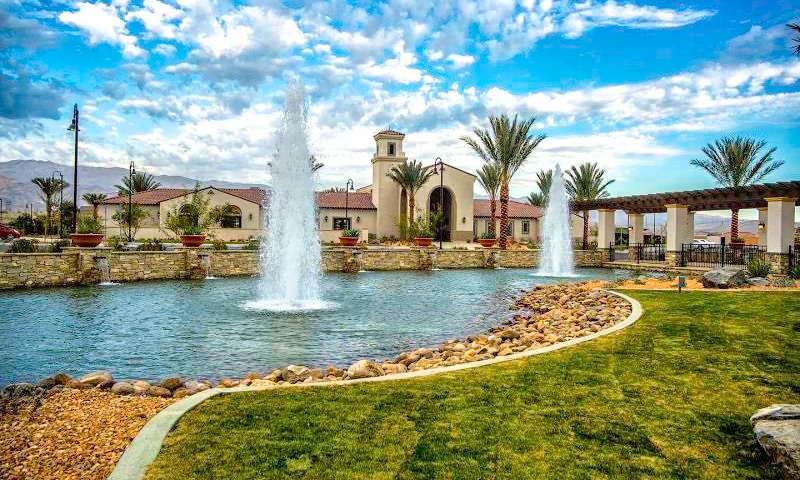
Terra Lago Homes for sale
Indio, CA- Low $400s - Mid $1Ms
- 639 Homes
- 55+ Age Restriction
- New And Resale Homes
Indian Ridge Country Club Homes for sale
Palm Desert, CA- Mid $500s - Low $2Ms
- 1,068 Homes
- Resale Homes Only
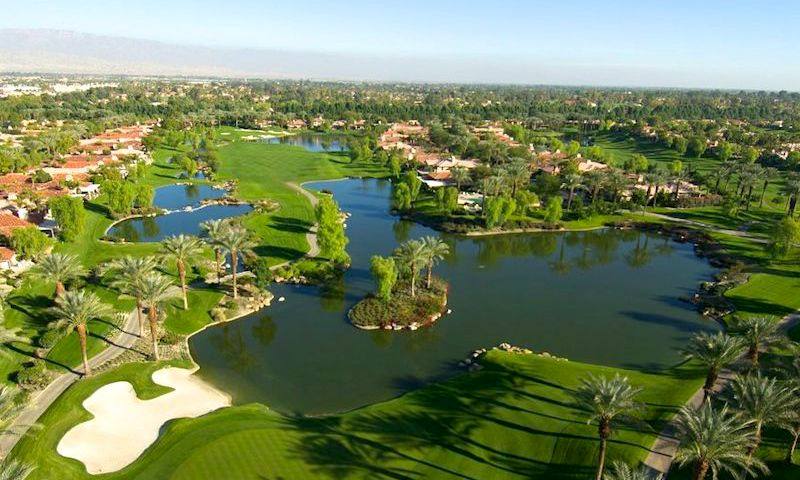
Heritage Palms Homes for Sale
Indio, CA- Mid $300s - Mid $600s
- 1,004 Homes
- 55+ Age Restriction
- Resale Homes Only
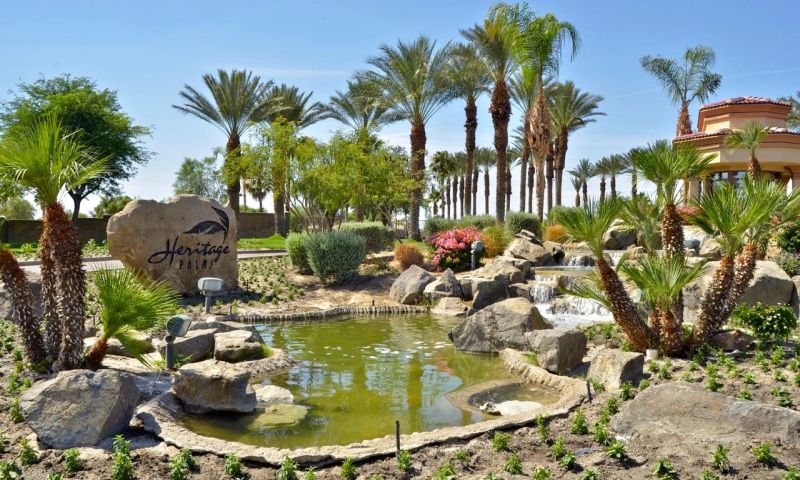
Indian Springs Golf and Country Club Homes for Sale
Indio, CA- Low $400s - High $600s
- 709 Homes
- Resale Homes Only
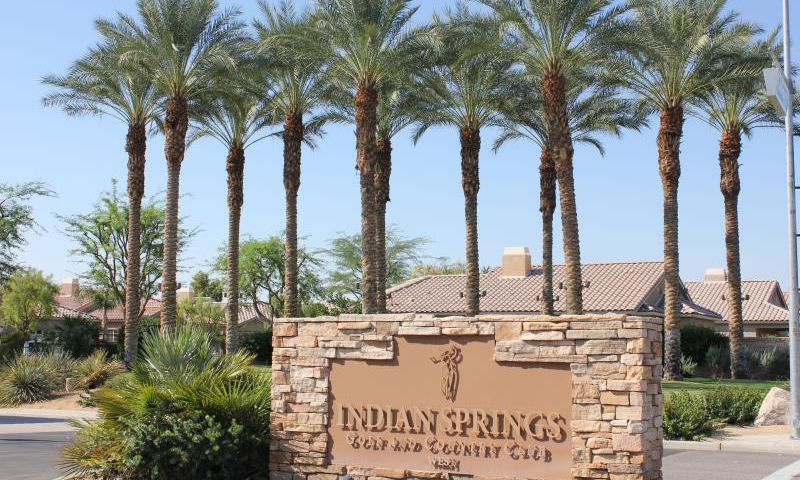
Toscana Country Club Homes for Sale
Indian Wells, CA- 652 Homes
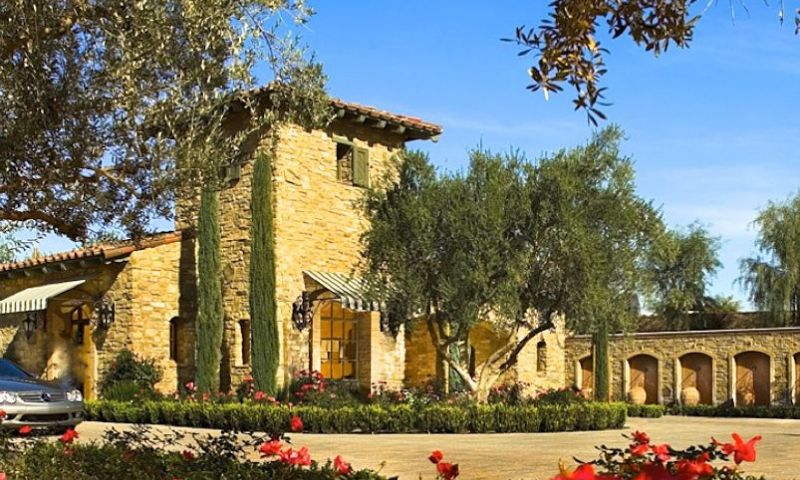
Trilogy® at The Polo Club Homes for Sale
Indio, CA- Mid $400s - High $800s
- 1,000 Homes
- New And Resale Homes
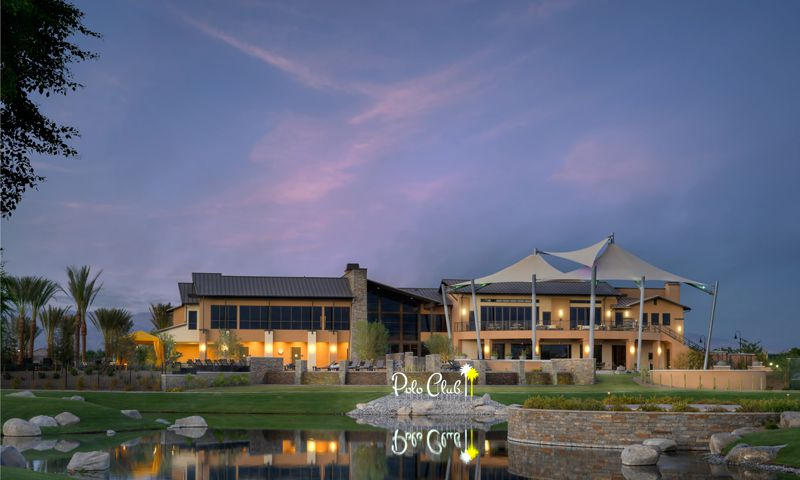
Rancho La Quinta Homes for Sale
La Quinta, CA- Mid $700s - High $2Ms
- 960 Homes
- Resale Homes Only

Del Webb Rancho Mirage Homes for Sale
Rancho Mirage, CA- High $500s - High $1Ms
- 1,000 Homes
- 55+ Age Restriction
- New And Resale Homes
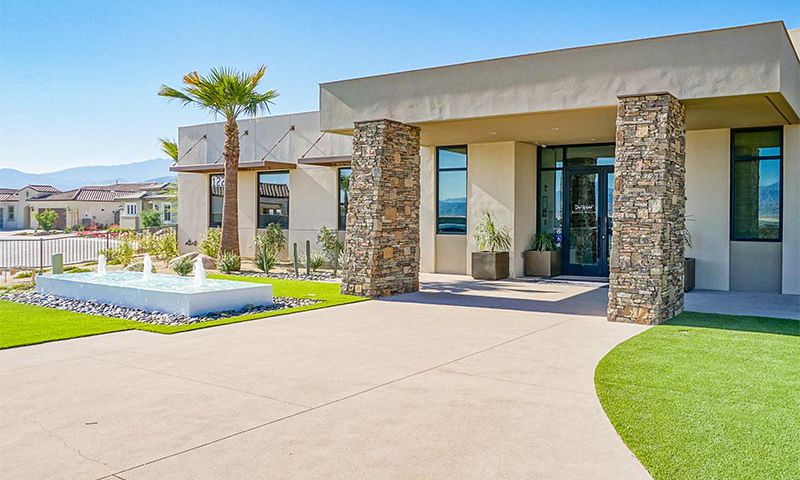
Villa Portofino Homes for Sale
Palm Desert, CA- Low $300s - Mid $700s
- 460 Homes
- 55+ Age Restriction
- New And Resale Homes
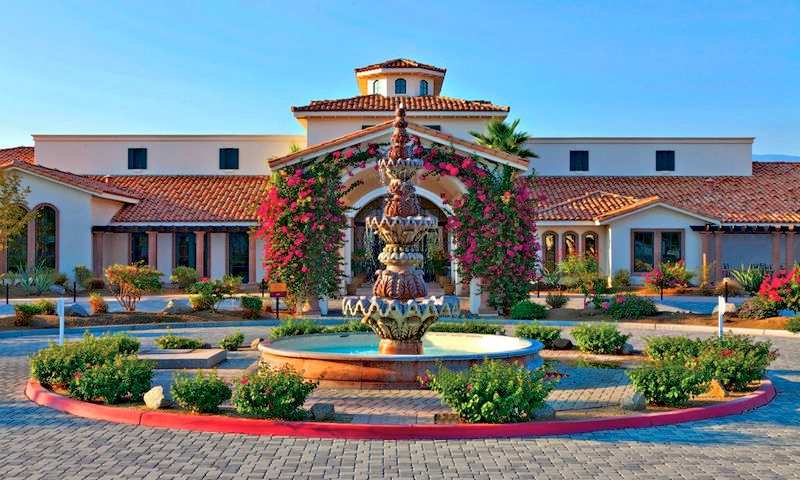
Domani Homes for Sale
Palm Desert, CA- 202 Homes
- 55+ Age Restriction
- New And Resale Homes
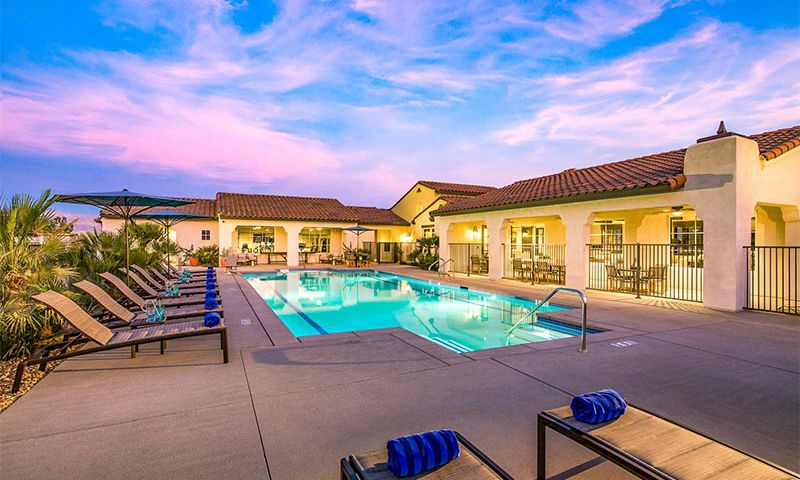
PGA West Homes for Sale
La Quinta, CA- 6,000 Homes

Palm Valley Country Club Homes for Sale
Palm Desert, CA- 556 Homes
- Resale Homes Only
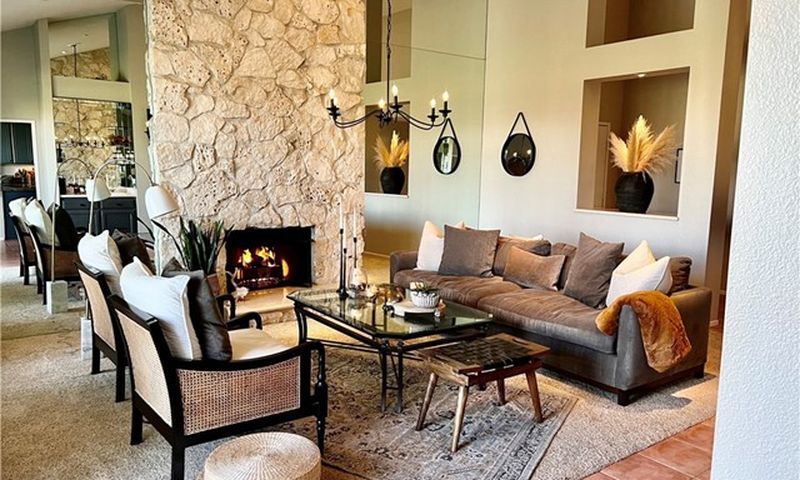
Marrakesh Country Club Homes for Sale
- 364 Homes
- Resale Homes Only
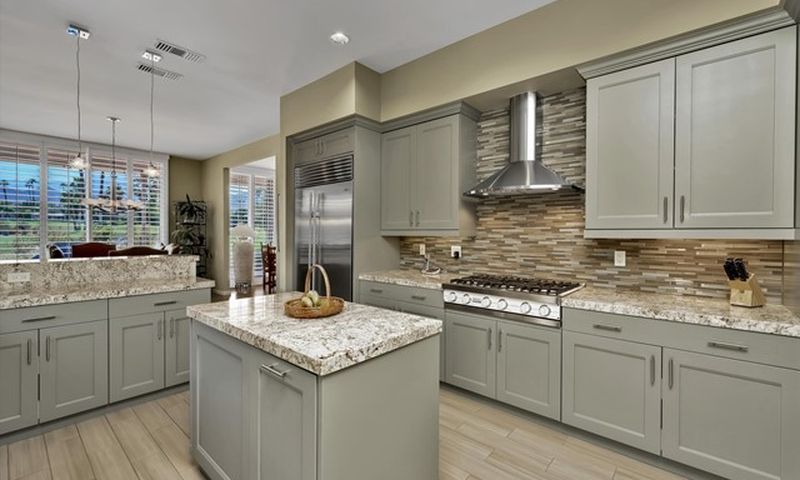
Desert Horizons Country Club Homes for Sale
- 510 Homes
- Resale Homes Only
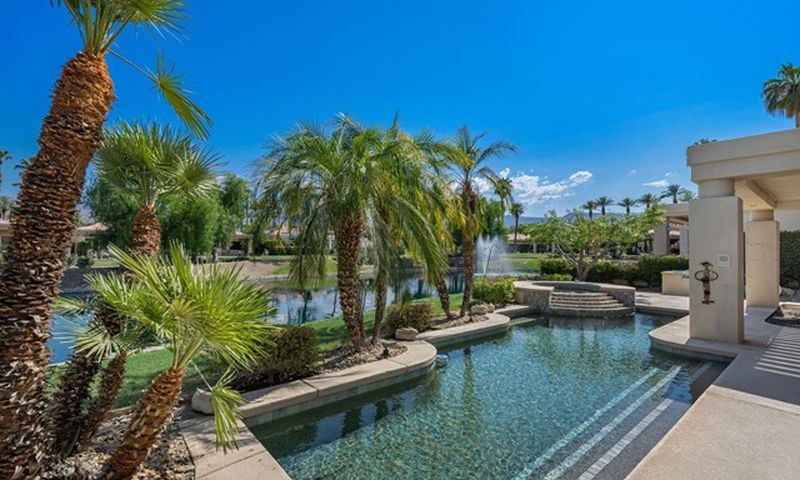
Monterey Country Club Homes for Sale
Palm Desert, CA- 684 Homes
- Resale Homes Only
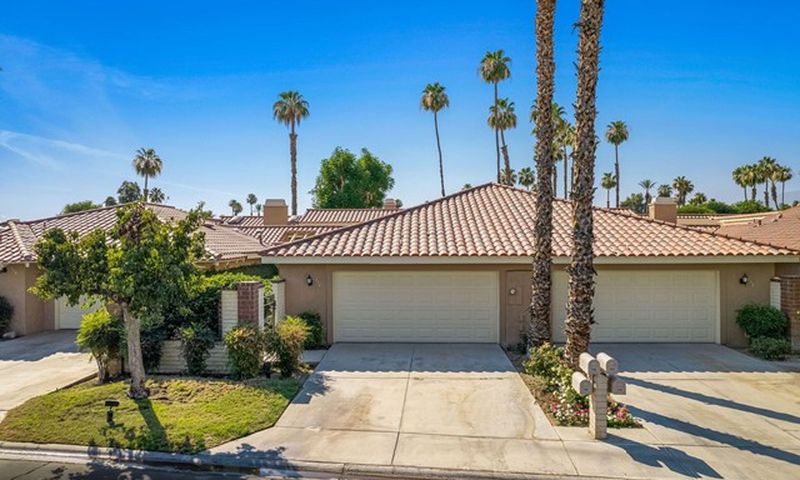
Escena Homes for Sale
Palm Springs, CA- 594 Homes
- New And Resale Homes
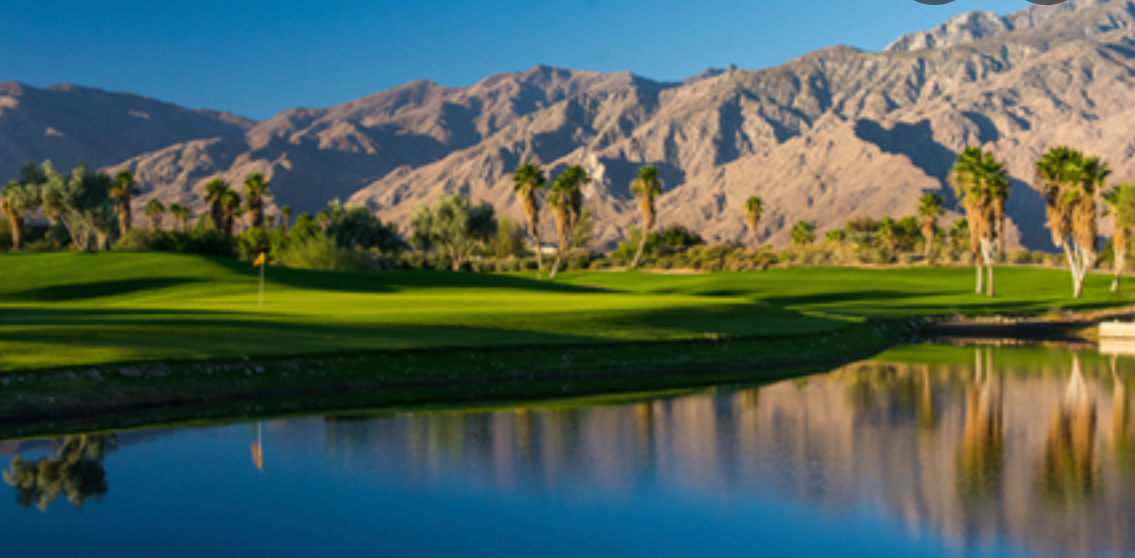
Rio del Sol Homes for Sale
- Low $300s - Low $600s
- 218 Homes
- New And Resale Homes
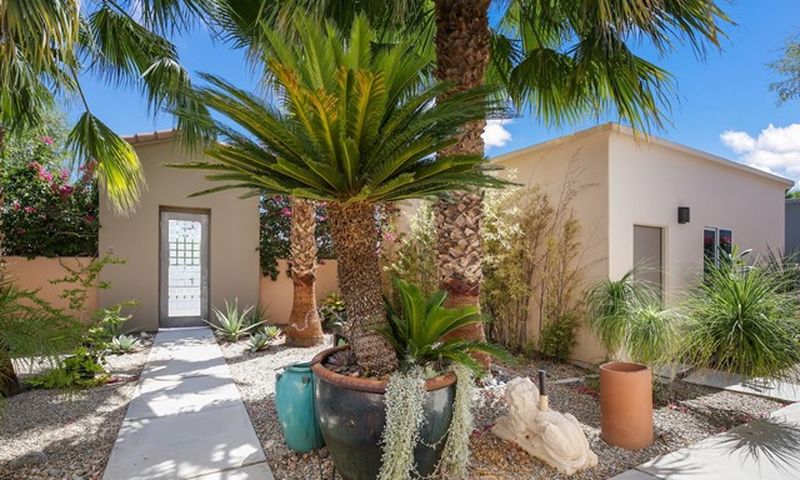
Sunrise Country Club Homes for Sale
- 746 Homes
- Resale Homes Only
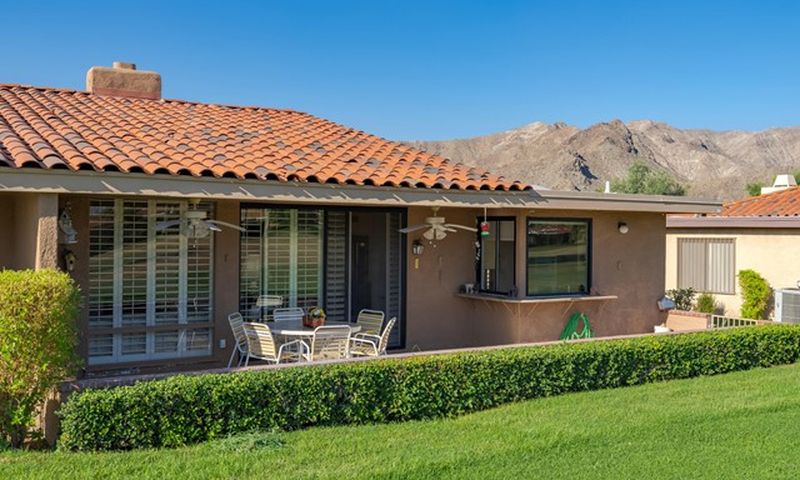
Chaparral Country Club Homes for Sale
Palm Desert, CA- 625 Homes
- Resale Homes Only
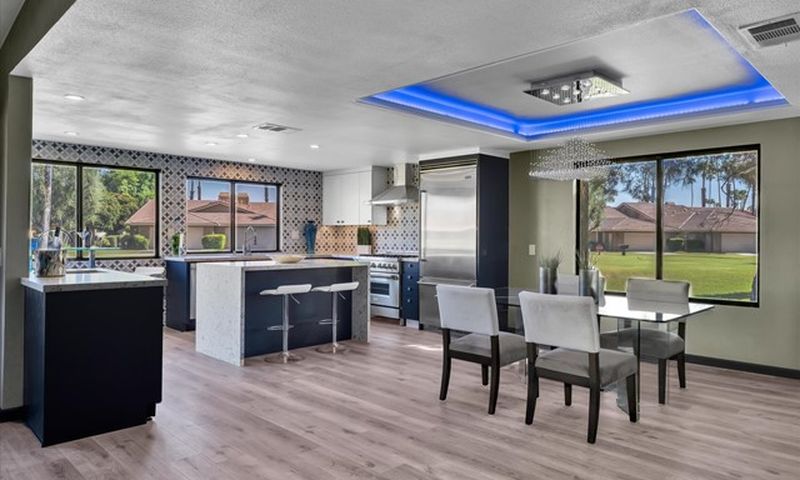
Laguna de La Paz
- 390 Homes
- Resale Homes Only
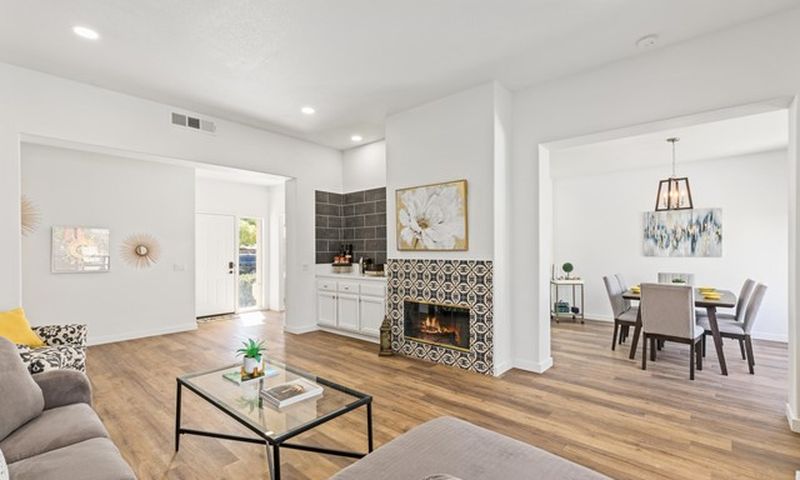
Lake La Quinta Homes for Sale
- 288 Homes
- Resale Homes Only
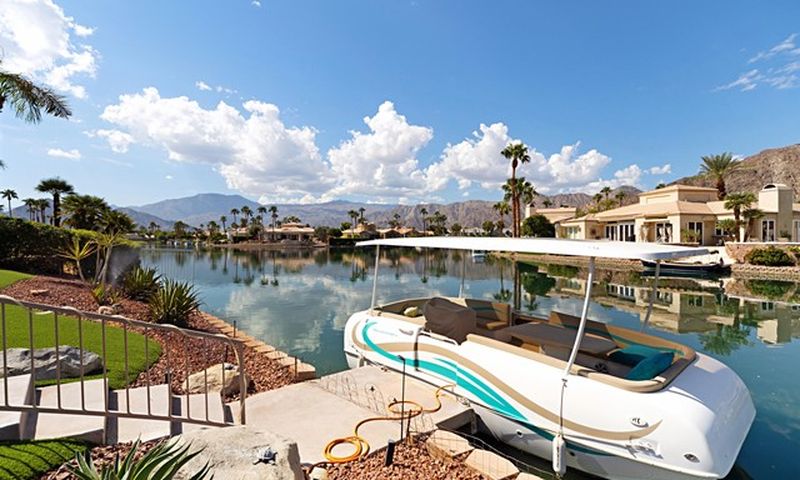
The Citrus Club Homes for Sale
- 625 Homes
- Resale Homes Only
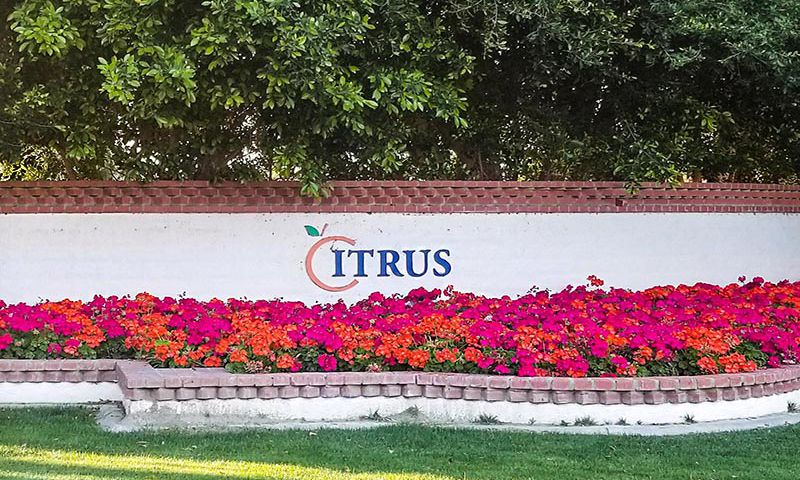
Woodhaven Country Club Homes for Sale
- 516 Homes
- Resale Homes Only
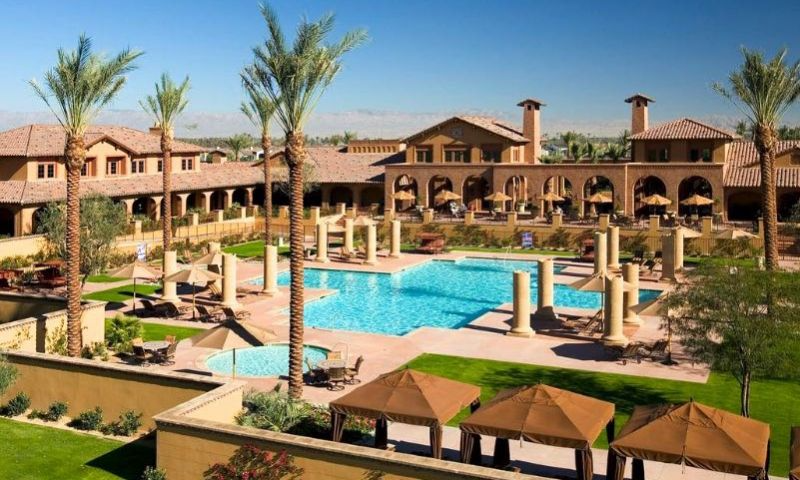
Andalusia at Coral Mountain Homes for Sale
La Quinta, CA- 900 Homes

Gallery Links at Indian Palms Country Club Homes for Sale
- 86 Homes
- Resale Homes Only

Desert Vista Village Homes for Sale
- 105 Homes
- 55+ Age Restriction
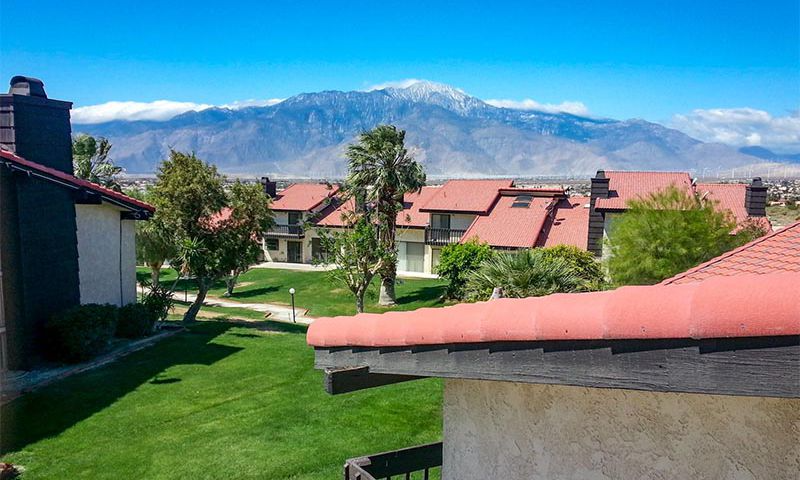
Desert Highlands Homes for Sale
- 26 Homes
- 55+ Age Restriction
- Resale Homes Only
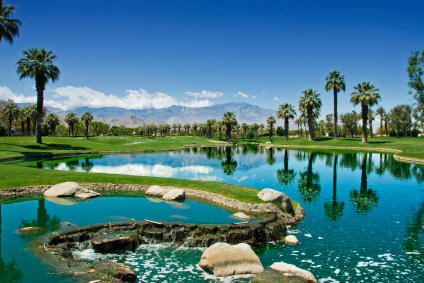
Palm Springs Over 55 affordable living.
Many of us are on a more restricted budget when retiring. There are numerous 55 Plus options available that are more affordable. They include many of the manufactured home communities in and around Palm Springs. They often include golf, clubhouses, gyms, and other ammenities commonly found in some of the bigger retirement communities in the area. The following are links to a few of the more popular communities.
- Palm Desert Greens, Palm Desert
- Suncrest Country Club, Palm Desert
- Sahara Park, Palm Springs
- Safari Park, Palm Springs
- Palm Canyon Mobile Club, Palm Springs
- Blue Skies, Rancho Mirage
- Vista Montana, Desert Hot Springs
Looking to retire in Palm Springs?
Our seasoned agents would love to help you find your desert retirement dream home.



